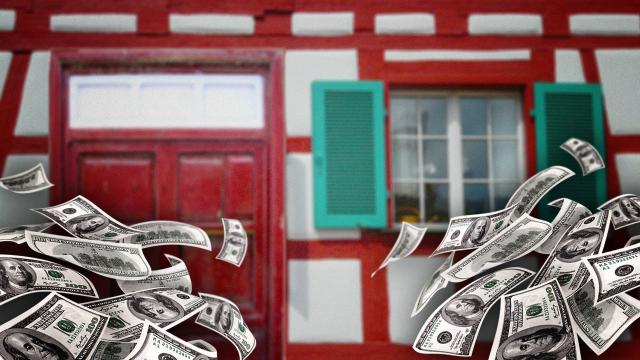Now that the hot and humid weather of summer is giving way to the cooler temperatures of the coming season, it’s time prepare your home for the seasonal change. Sealing the air leaks around your home windows and doors is a simple chore that can help prevent drafty cold spots in your house, which means you can save money on your monthly utility bills.
House picture from Shutterstock
The key to success when tackling this home maintenance project is knowing how best to discover all of those tiny air leaks that prevent your house from being the cozy, energy-efficient home you want.
Open Your Eyes
When checking your home windows and doors for air leaks, start with a detailed visual inspection from both the interior and exterior of your home. On the outside you should look for areas where the old caulking has failed, revealing the gap between the window or door frame and your home’s siding.
If your home has old single-paned windows, be on the lookout for damaged glazing, which is the hard putty that holds the individual panes of glass in place. If the entire perimeter of each window and door is not sealed tight against water and air infiltration, then your home is vulnerable to expensive heat loss.
From the inside of your home, you should inspect the threshold under each door, looking for daylight or other obvious signs of an opening that is too big and needs to be sealed shut. Make sure that the weather stripping around the windows and doors is in good condition, making note of any damaged weather stripping that needs to be replaced.
Have A Smoke
Although many problem areas are obvious enough, keep in mind that some air leaks are not easily seen. One way to detect these air leaks is to conduct a “smoke test”. To do this, you will need to close all the windows and doors in your home and turn off any combustion appliances, such as a furnace or water heater. Next you will need to turn on the kitchen and bathroom exhaust vents, which will create a negative pressure in your house that sucks outside air into your home through any crack or opening.
Now you can check for air leaks by holding a lit incense stick close to the spaces around the edges of your home windows and doors, looking for a noticeable change in the smoke rising from the lit incense stick. If there is a air leak, the smoke will waiver and be drawn inwards by the outside air that is finding its way into your home. If the smoke remains undisturbed, then you can assume that there are no air leaks in that specific area.
Get Technical
Another option for detecting air leaks is using an infrared thermometer, which is a non-contact thermometer that can measure the ambient air temperatures around window and door frames. In areas where cold outside air is leaking into your home, the thermometer will register a colder temperature, indicating a vulnerable area that could be wasting energy and costing you money.
Call In The Pros
If you don’t want to discover your home’s air leaks on your own, then you always have the option to hire a professional energy auditor to conduct a “blower-door” test on your home. Similar to the smoke test, a blower door test can assess the air tightness of your home and detect air leaks. During this test a specialised fan is attached to your home’s door frame, which then pulls air out of your home, resulting in a lower interior air pressure.
Once the fan is stopped, the higher air pressure outside the home tries to find its way back into your home through any cracks or crevices. A smoke stick is then used to locate those areas that are leaking and vulnerable to heat loss. These test are usually not very expensive.
Once you’ve discovered the air leaks in your home, you can set about sealing them up. More often then not, a fresh layer of exterior-grade caulking will adequately seal shut any gap or crack that is causing you problems. New weatherstripping or an adjustable threshold can help to seal shut the gaps around your home’s doors. Remember, the goal of your project is to discover all the air leaks around so that you can seal them up tight, which should result in a more comfortable and energy efficient home this winter.
How to check your windows and doors for costly air leaks [Improvement Center]
Marshall McCauley is a builder and freelance writer.

Comments
One response to “How To Check Your Windows And Doors For Costly Air Leaks”
There is a perfectly good word in the English language already for an ‘air leak’. It has two spellings – draught and draft. Take your pick, the first is the original.